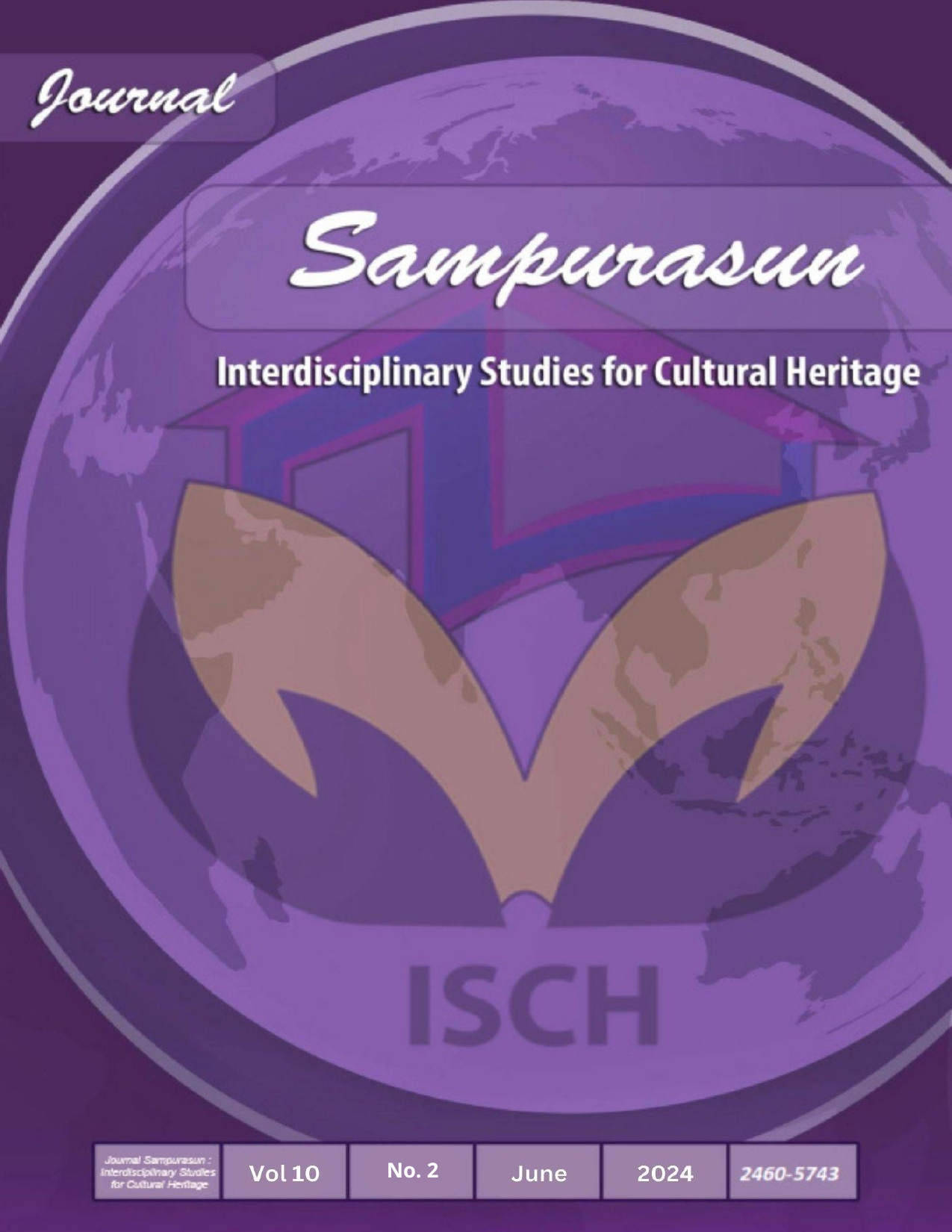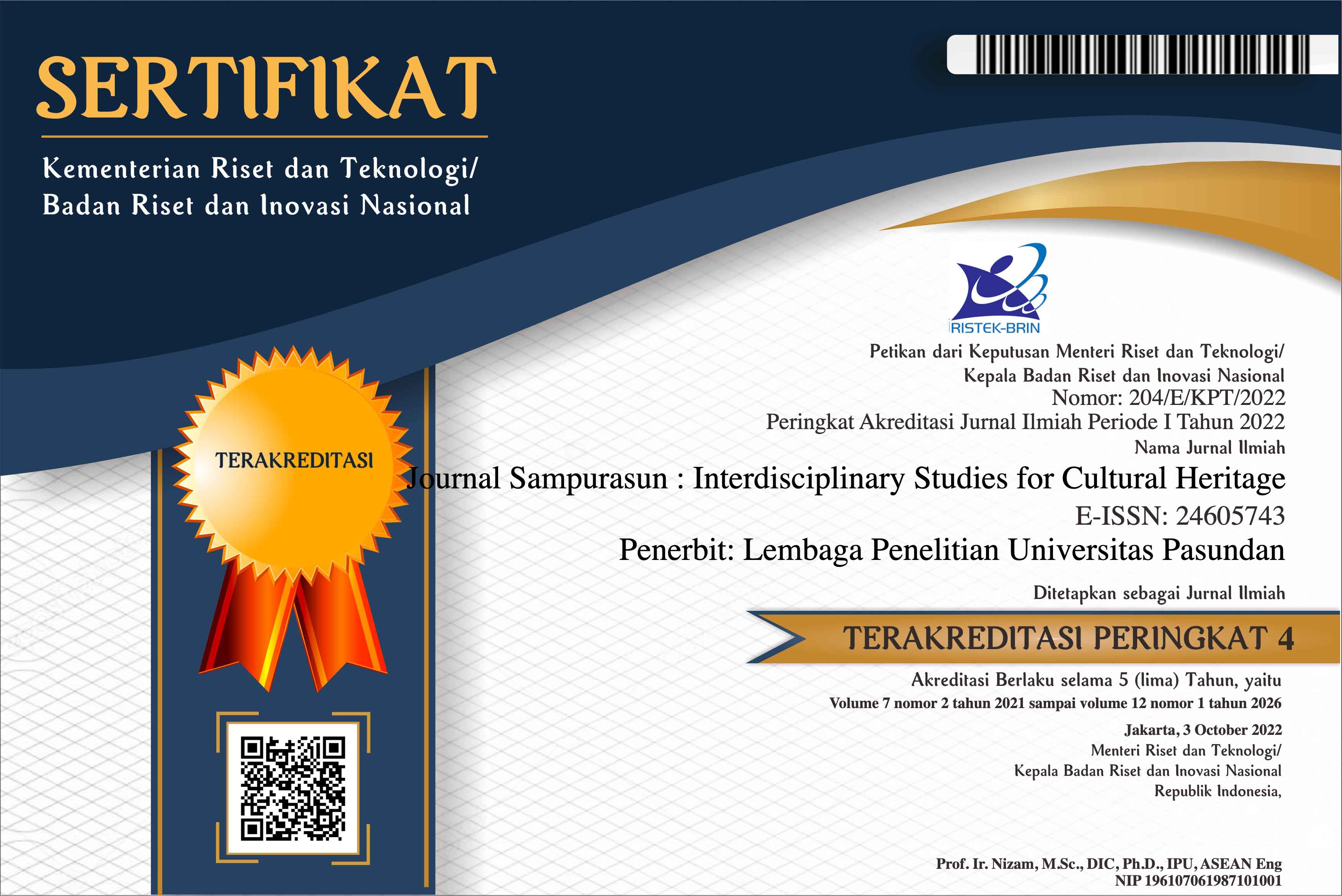A FRAMEWORK FOR THE CONSERVATION AND VALORISATION OF COLONIAL ARCHITECTURAL HERITAGE OF COASTAL COLONIAL TOWNS, GHANA
DOI:
https://doi.org/10.23969/sampurasun.v10i2.15540Keywords:
Urban Morphology, Colonial Architectural Heritage, Conservation, Valorization, Coastal Colonial Towns, FrameworkAbstract
Coastal Colonial Towns (CCTs) of Ghana contain Colonial Architectural Heritage (CAH). The CAH are valuable assets which possess economic and utility values which can be harnessed for development. Over the years, the morphologies of the CCTs have been exposed to destructive forces, putting the CAH at risk. There is the need to rescue the CAH. This study focused on establishing a framework to guide the identification, conservation and valorisation of the CAH, not only to prevent their destruction but most importantly make them socio-economically viable to national developments. The study relied mostly on scholarly literature to first identify the gaps associated with pertinent theories; none of the morphological approaches considers both the micro and macro–Urban Tissues (UT) and both the human and environmental factors at the same time; and the theories have not been explored well in Ghana to enable the identification and conservation of heritage items. The proposed framework which is to fill the gap, is a synthesis of the morphological approaches (Historico-geographic, Process-typological and Space syntax), the Power theory and the Historic Urban Landscape approach. The study makes significant contribution by allowing both the macro and micro UTs as well as the environmental and human factors to be considered for the identification, conservation and valorization of CAH. Moreso, the study produced a framework which can be adapted to conserve and valorise the CAH of the CCTs of Ghana.
Downloads
Downloads
Published
Issue
Section
License
Copyright (c) 2024 Journal Sampurasun : Interdisciplinary Studies for Cultural Heritage

This work is licensed under a Creative Commons Attribution 4.0 International License.
Copyright Notice
Authors should not withdraw their submitted papers because the withdrawal wastes voluntary works devoted by an associate editor and reviewers. But, we accept the withdrawal of a submitted paper if authors have unavoidable reasons. In the event that a manuscript is to be withdrawn from submission to Sampurasun Journal, a letter must be sent to the editorial office requesting withdrawal by e-mail (sampurasunjournal@unpas.ac.id) with its scanned PDF file, before the notification of acceptance for publication.
The withdraw request letter must include the following information. Paper ID, Paper title, Authors names, Reason why the paper must be withdrawn, and Date and signatures of all the authors (or signature of the contact author).
If only the contact author signs the letter, he/she must obtain the agreement of the withdrawal from all the other authors and the letter must include the description that all the other authors agreed the withdrawal. The journal will not withdraw a manuscript from peer review until such a letter has been received. Authors must not assume their manuscript has been withdrawn until they have received appropriate notification from the editorial office. Withdrawal of a manuscript subsequent to acceptance for publication will only be granted in the most exceptional of circumstances.
After the paper is accepted for publication, the withdrawal is not permitted in principle. The authors must always pay the charge even if the withdrawal is permitted. Any request of withdrawal that does not follow the above procedure is treated as invalid. If illegal submission, e.g., plagiarized or duplicate submission, is found for a paper, the withdrawal of the paper will never be permitted and the authors will be punished based on the rule. It is not acceptable practice to withdraw a manuscript in the event of acceptance at another journal. This constitutes dual submission. The editorial office of the other journal will be notified of your actions. In such circumstances Sampurasun ISCH may chose to impose appropriate punitive action subject.
Withdrawal Penalty
Author is not allowed to withdraw submitted manuscripts, because the withdrawal is waste of valuable resources that editors and referees spent a great deal of time processing submitted manuscript, money and works invested by the publisher. If author still requests withdrawal of his/her manuscript when the manuscript is still in the peer-reviewing process, author will be punished with paying $200 per manuscript, as withdrawal penalty to the publisher. However, it is unethical to withdraw a submitted manuscript from one journal if accepted by another journal. The withdrawal of manuscript after the manuscript is accepted for publication, author will be punished by paying US$500 per manuscript. Withdrawal of manuscript is only allowed after withdrawal penalty has been fully paid to the Publisher. If author don't agree to pay the penalty, the author and his/her affiliation will be blacklisted for publication in this journal. Even, his/her previously published articles will be removed from our online system.


















